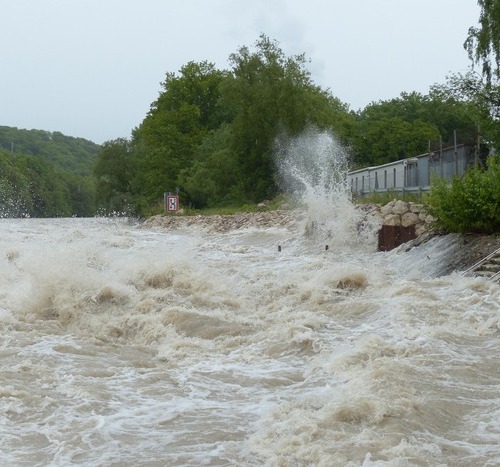Scientists warn that rapidly shifting weather patterns, warming oceans, and unchecked development are multiplying disaster risks
In the Indian Himalayas, there were two deadly extreme weather events that led to deaths of dozens in two different states — Uttarakhand, and Kashmir. Both events were cloudbursts.
In Uttarakhand’s Dharali, sudden and intense rainfall unleashed flash floods, leading to the damage of homes and other buildings. Thanks to early warnings, the number of casualties were less — five, according to official count.
In Kashmir’s Chositi, a small village in the district of Kishtwar, a massive cloudburst led to flash floods, leading to dozens of people dying or going missing. There was severe destruction on the pilgrimage route, as Chositi is on a busy pilgrimage route to a Himalayan shrine.
According to records, at least 60 people have been killed in Kashmir due to the flash floods, while more than 100 have been injured, according to Jammu and Kashmir Chief Minister Omar Abdullah.
Both these cloudbursts highlight something deadly — the Himalayas are fragile, and the effects of the climate crisis are accelerated. Scientists warn that rapidly shifting weather patterns, warming oceans, and unchecked development are multiplying disaster risks.
Climate-induced disasters
When the dense combination of water, mud and debris descended upon Chositi village last week, the immediate reason attributed to it was flash flood. However, there’s a more subtle, long-term change that is accelerating and increasing the frequency of such flash floods — shifting monsoon patterns, and northward shifting monsoon winds.
Caused by climate change, this is intensifying rainfall and flash floods over the Himalayas. In fact, climate change increases atmospheric moisture, causing more frequent cloudbursts. Every degree rise in temperature adds 7% more moisture-holding capacity to the air.
“Topographically, the Himalayas comprise a series of diverse hill ranges that have a profound effect on weather patterns. One major factor is orographic rainfall—when moist air is forced to rise over the mountains, cooling and condensing into heavy precipitation. To predict such rainfall accurately in this complex terrain, we need systems capable of capturing the ‘mountain effect’ with precision,” said Professor Sachchida Nand Tripathi Dean, Kotak School of Sustainability, IIT Kanpur.
This is the result of abnormal ocean warming, which increases moisture in the atmosphere, resulting in more intense and frequent cloudbursts or similar conditions. Besides cloudburst, the other effect is rapid glacier melt, which is destabilising mountain slopes and filling glacial lakes, and there has been a sharp increase in large glacier-related landslides across the high mountains in Asia.
The Hindu Kush Himalayan glaciers retreat by roughly 15 metres every year, leading to unstable lakes and increasing the risk of landslides. Combined with massive infrastructure projects such as roads, hydropower and hotels in eco-sensitive zones, the hazards amplify, especially where disaster regulations are ignored. This calls for the urgent need for floodplain zoning, early warning systems, and halting unplanned construction.
“We now need to focus on the infrastructure in the region. These inclement weather events will persist, in fact, increase due to global warming. The land is already saturated because of the continuous downpour for the last many days. Deforestation in the region has led to weakened slopes, making them more susceptible to landslides and mudslides. In such prevailing conditions, even a heavy downpour of 50 mm-60 mm can trigger such an extreme event,” said Mahesh Palawat, Vice President of Meteorology and Climate Change, Skymet Weather.
About The Author
You may also like
Air Pollution is Changing the Lightning Patterns in India, Study Finds
Can green trade barriers save the environment?
Temporary CO2 Removal Will Help Offset Methane Emissions: Report
Rise in Fossil Fuel Burning is Making Floods Lethal in Asia
Heatwaves Drove 9% of India’s Power Demand in the Summer of 2024

